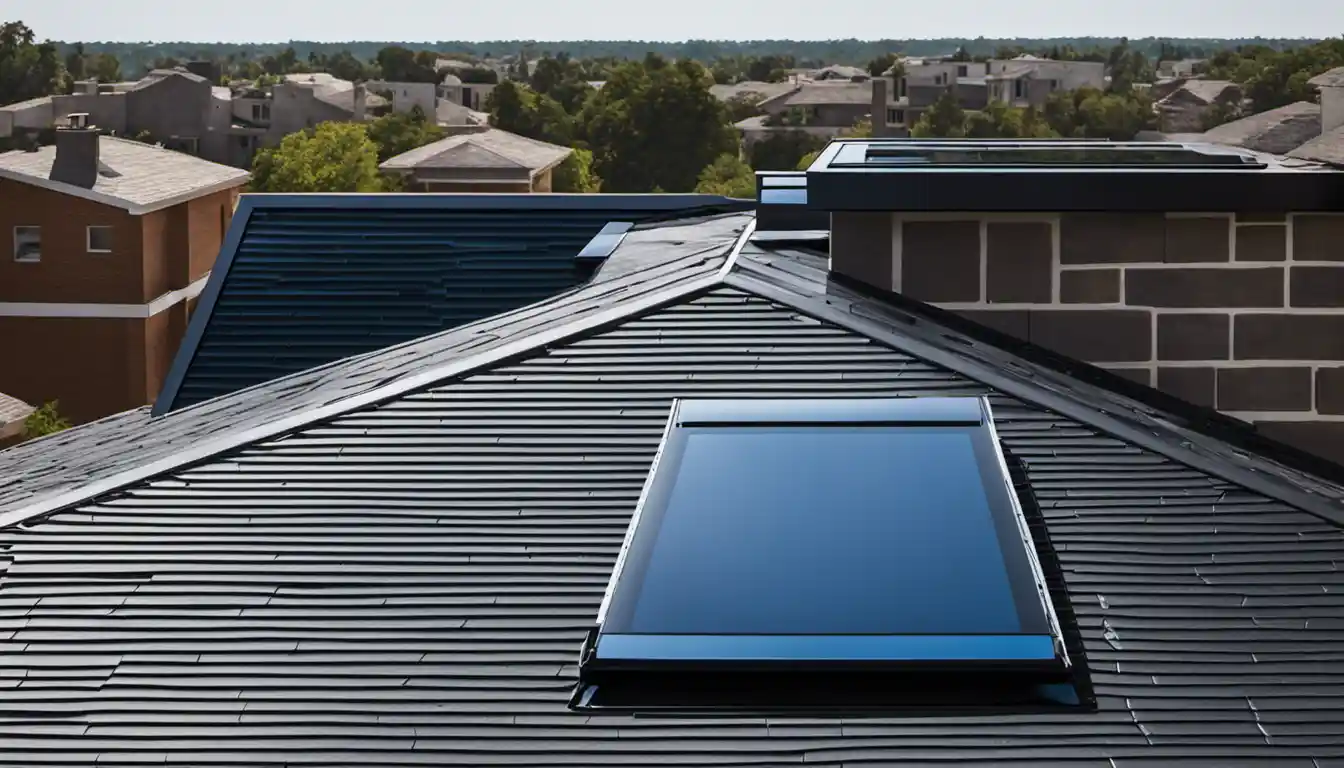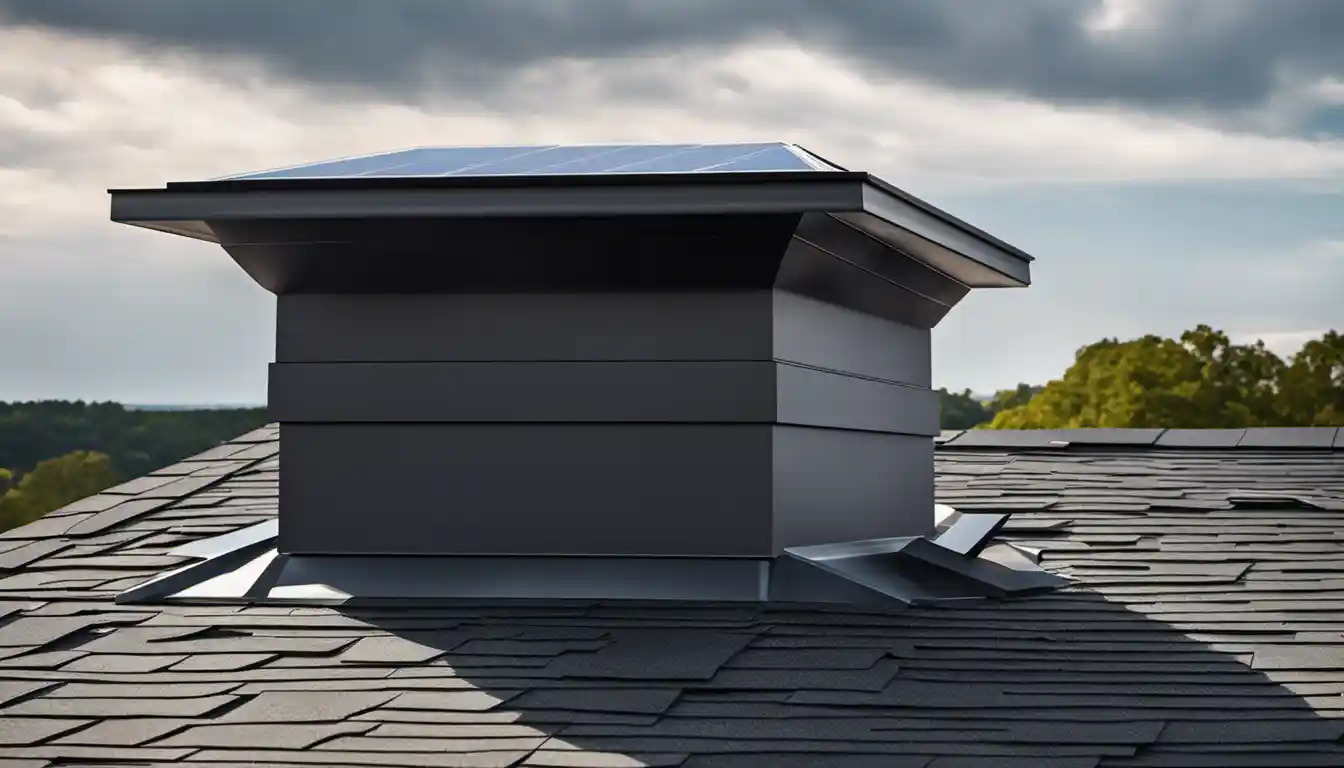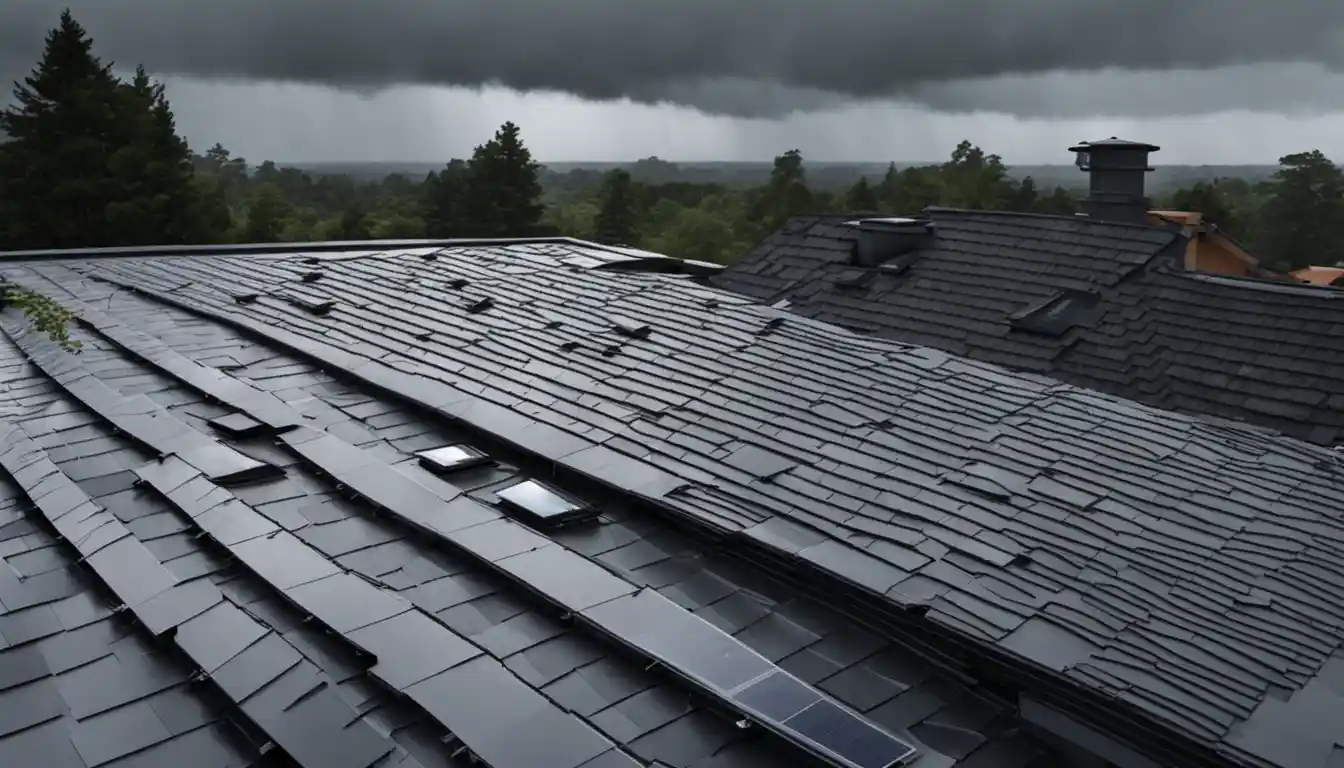Understanding Solar Roof Vents
Solar roof vents are beneficial as they can significantly reduce the heat in your attic, which can lower cooling costs and prevent damage to your roof shingles. They also use solar power, making them energy efficient and environmentally friendly. However, the cons include their high initial cost for purchase and installation, and they may not be as effective in areas with limited sunlight or during winter months, which may require supplemental ventilation systems.
Description and working mechanism of solar roof vents
At its heart, a solar roof vent is a simple mechanism. Think of it like a window that you can open and close automatically to let out hot air and dampness, only it’s in your roof and is powered by sunlight. These intelligent devices can regulate the temperature and moisture levels in your attic, improving overall energy efficiency and the life expectancy of your roofing materials.
See also: What is Solar Ventilation? A Comprehensive Guide to Eco-friendly Cooling Solutions
Examination of the Pros
See also: Solar Roof Vent vs Turbine: A Comprehensive Comparison for Homeowners
Little to no ongoing costs after installation
One of the most compelling advantages of solar roof vents is that once they’re installed, you will not incur further expenses, except perhaps for occasional maintenance. These devices function entirely on solar energy, eliminating the need for an alternate, costly power source.
See also: Solar Vent vs Whirlybird: A Comprehensive Comparison for Homeowners
Effectively lowers attic temperature
Heat can accumulate in your attic, causing your air conditioner to work harder and raising your energy bills. By installing a solar roof vent, you can significantly lessen your attic temperature, reducing the need for air conditioning and potentially saving you money in the long run.
Not intrusive – does not steal cool air from other parts of the home
Unlike other forms of attic ventilation that can draw cool air from your living spaces, solar roof vents directly vent warm air outside. This way, your home stays cool without any disturbance.
Quiet operation with minimal noise interruptions

Solar roof vents are renowned for their silent operation. Unlike their electrical counterparts, you don’t need to worry about constant humming sounds disrupting your peace.
Ease of installation without need for a professional electrician
Solar roof vents are easy to install compared to traditional electric fans, which often require complex wiring. The installation process is straightforward, but you can also check out our guide on “how to install a solar attic fan” to ensure you’re doing things correctly.
No carbon monoxide emission risk
Traditional roof vents powered by electricity or gas can pose a risk of carbon monoxide emission, which is harmful to both humans and pets. This risk is nullified by solar roof vents as they rely on renewable solar power.
Contributes positively to roof health and longevity
Solar roof vents can extend the life of your roof by preventing over-heating that can damage your shingles, thereby reducing your long-term repair and replacement costs.
Keeps surrounding areas cooler – beneficial for adjacent rooms
By regulating the temperature in the attic, solar roof vents also influence the temperature of nearby rooms, making your home more comfortable overall.
Eco-friendly option that aids in planet preservation
In a world growing more concerned about environmental sustainability, solar roof vents are a great way to reduce your carbon footprint.
Aesthetically pleasing addition to any home

Solar roof vents come in various stylish designs and can be a chic addition to your home, accentuating both the roof and the general exterior decor.
Reduces moisture and humidity in the attic
Apart from managing temperature, solar roof vents also control attic moisture, preventing the growth of harmful mold, mildew and helping to maintain good air quality.
Provides potential energy costs savings
By reducing the load on your AC unit, solar roof vents indirectly lead to energy cost savings.
Examination of the Cons
Efficiency dependent on sunlight – may be less effective during overcast conditions
One of the primary disadvantages of solar fans is their dependency on sunlight. They can be less effective on cloudy days or during winter months. However, it’s worth noting that there are models available that can store energy for use during the night or on less sunny days. Check out our article “do solar attic fans work at night” for more information.
Monetary savings might not be significant
While solar roof vents can lead to energy cost savings, the actual money saved might vary conditionally and may not be substantial.
Potential roof leaks caused by incorrect installation

If not properly installed, solar roof vents might lead to roof leaks. This is why professional installation is often recommended, despite the ease of DIY installations.
High upfront installation costs
The initial cost of buying and installing a solar roof vent can be high, which can deter some homeowners. However, the savings in energy costs over time can make up for this.
May necessitate more than one unit in larger houses
Larger homes may require more than one solar vent for effective ventilation, which can hike the initial cost.
Are Solar Roof Vents Worth It?
Weighing the pros and cons of solar roof vents is vital to answering the question of value. This analysis shows you that the benefits, in terms of cost savings and environmental friendliness, could be substantial.
However, it’s clear that the cost savings will vary based on your geographical location (sunny vs. cloudy climates), the size of your house, and other factors. You should also consider the potential trade-offs like the upfront investment and the chance of leaking if not installed correctly.
So, asking “are solar roof vents worth it?” might result in different answers for different homeowners.
Disadvantages of Solar Fans
The primary disadvantages of solar fans include their upfront costs and dependency on sunlight. Additionally, improper installation can lead to roof leaks, and multiple units may be needed for larger homes.
Commonly Asked Questions
Many homeowners ask: “Do solar roof vents require thermostats?” Solar vents equipped with thermostats operate only when the attic temperature reaches a preset level, usually around 80-90 degrees, thereby maximizing efficiency.
In terms of noise, solar roof vents are known for their quiet operation, causing minimal distraction.
The lifespan of solar roof vents is roughly about 10 to 20 years, if maintained properly. Certainly, durability is a factor to consider if you’re deciding whether to invest.
The necessity and recommended quantity of solar attic fans in a single household depend on multiple factors like your home’s size, the climate, and your particular ventilation needs. Check out our guide on the “best solar attic fans” to know which, and how many, might suit your home the best.
Concluding Thoughts
Investing in solar roof vents has more pros than cons – they’re eco-friendly, can lower your energy costs, and help prolong the lifespan of your roof. However, these vents do require an upfront investment and their performance can be weather-dependent.
Whether or not installing solar roof vents are worth it for you will ultimately depend on your specific circumstances. Having a comprehensive understanding of solar roof vents pros and cons will enable you to make an informed decision.



